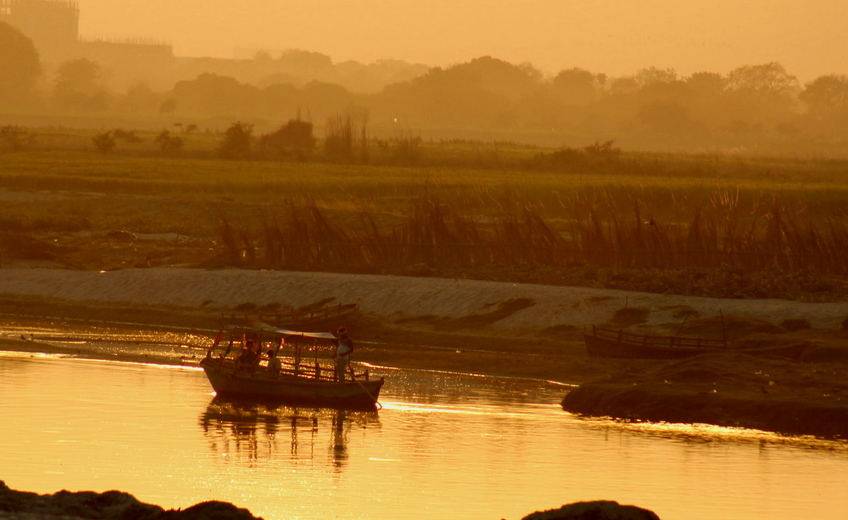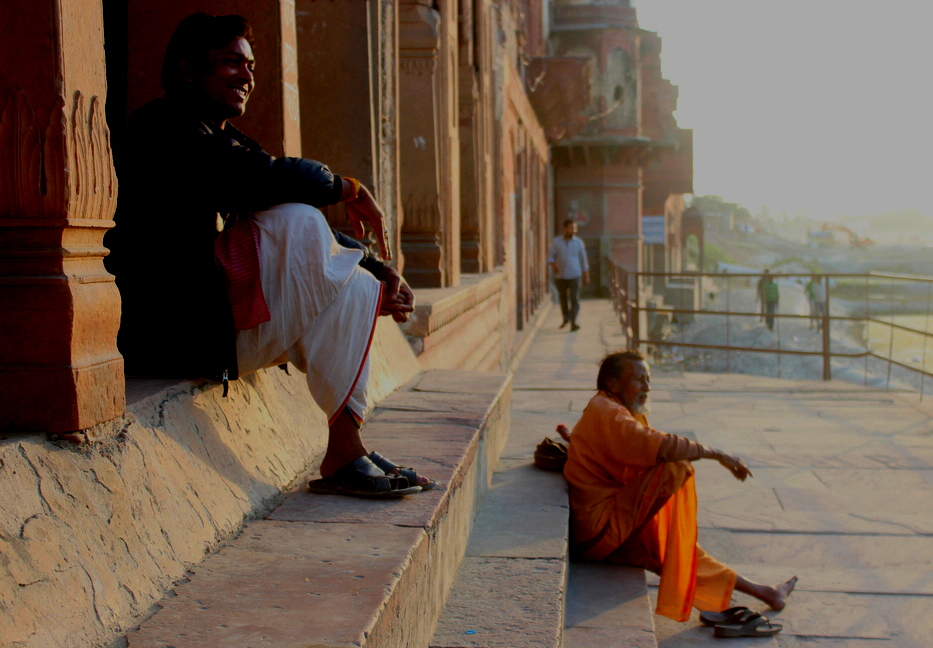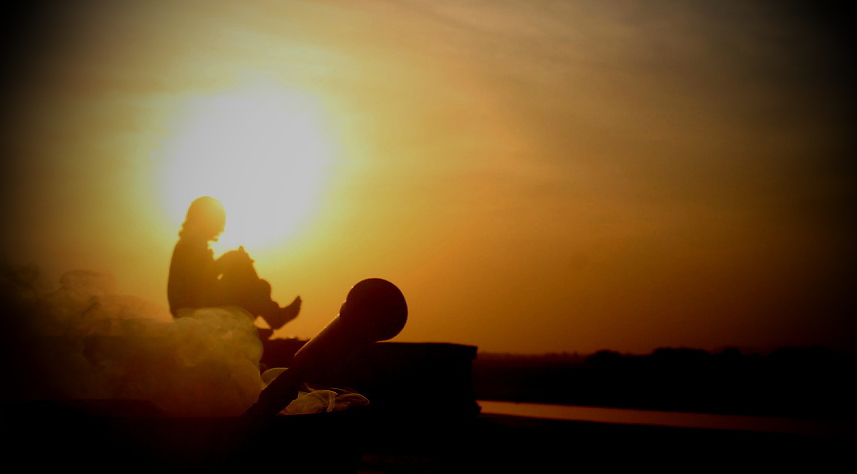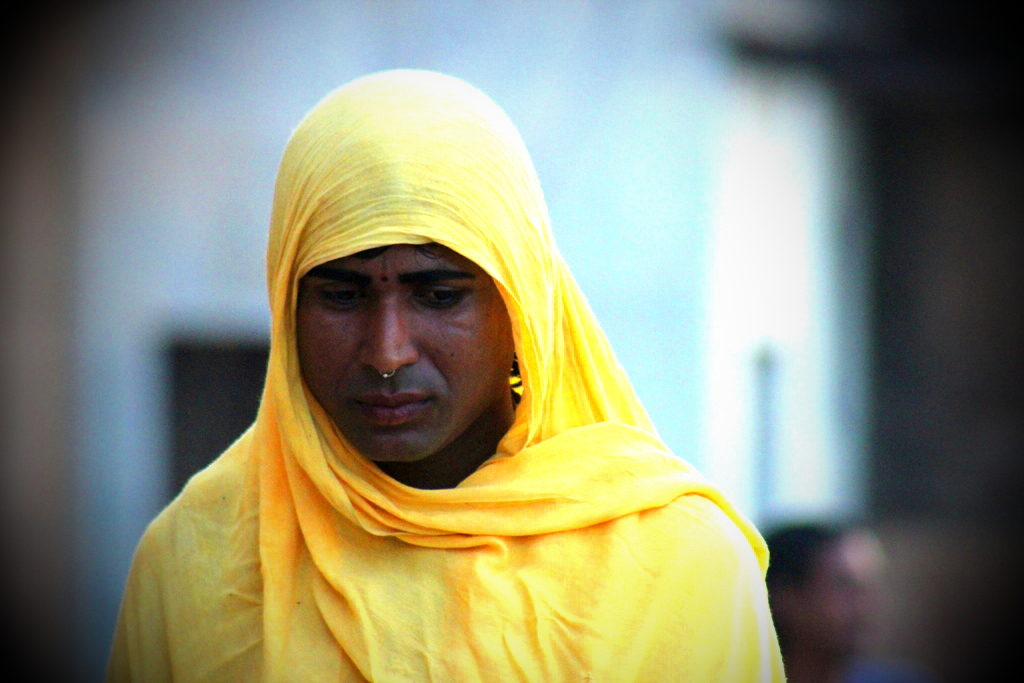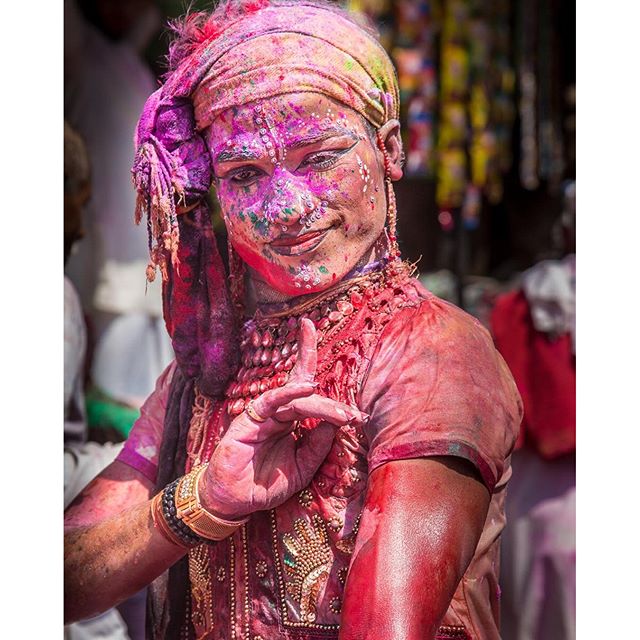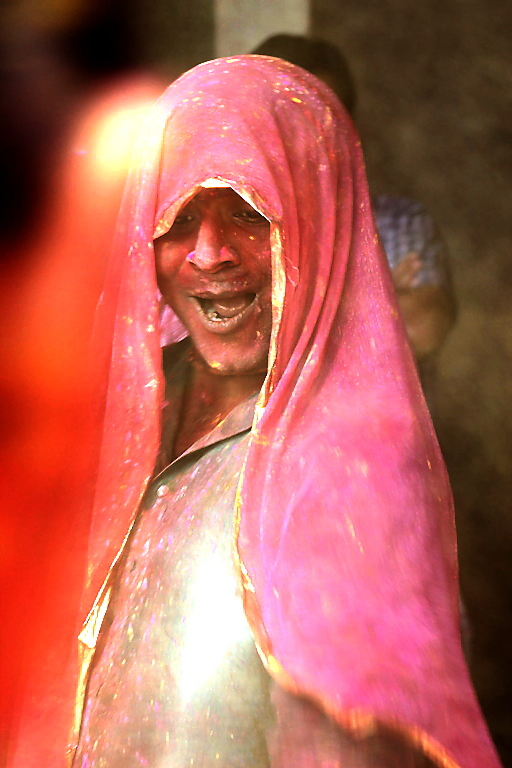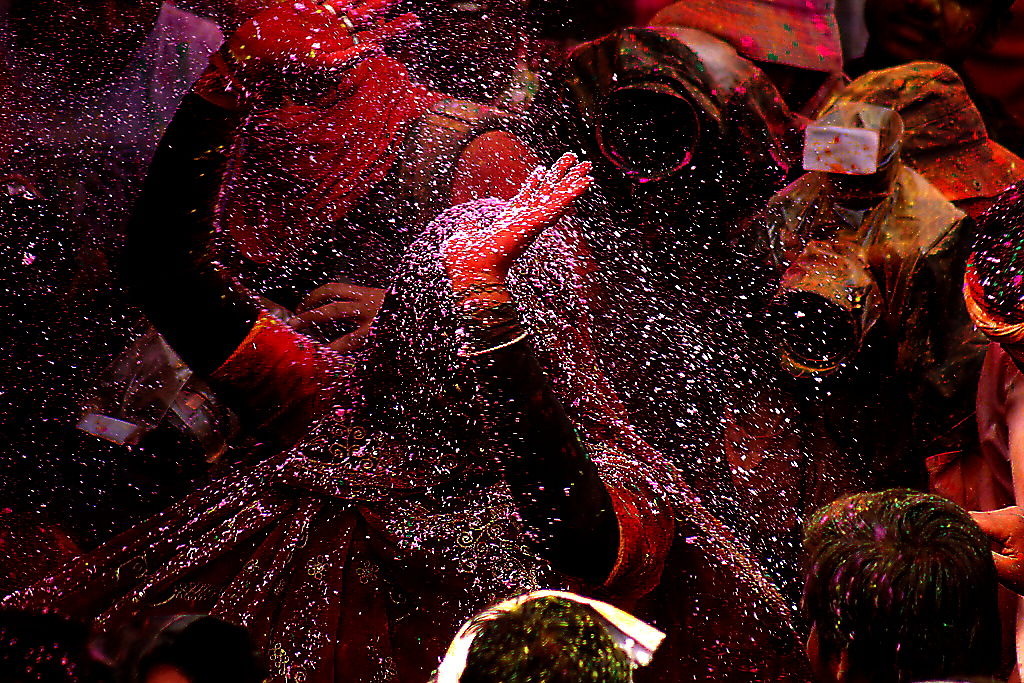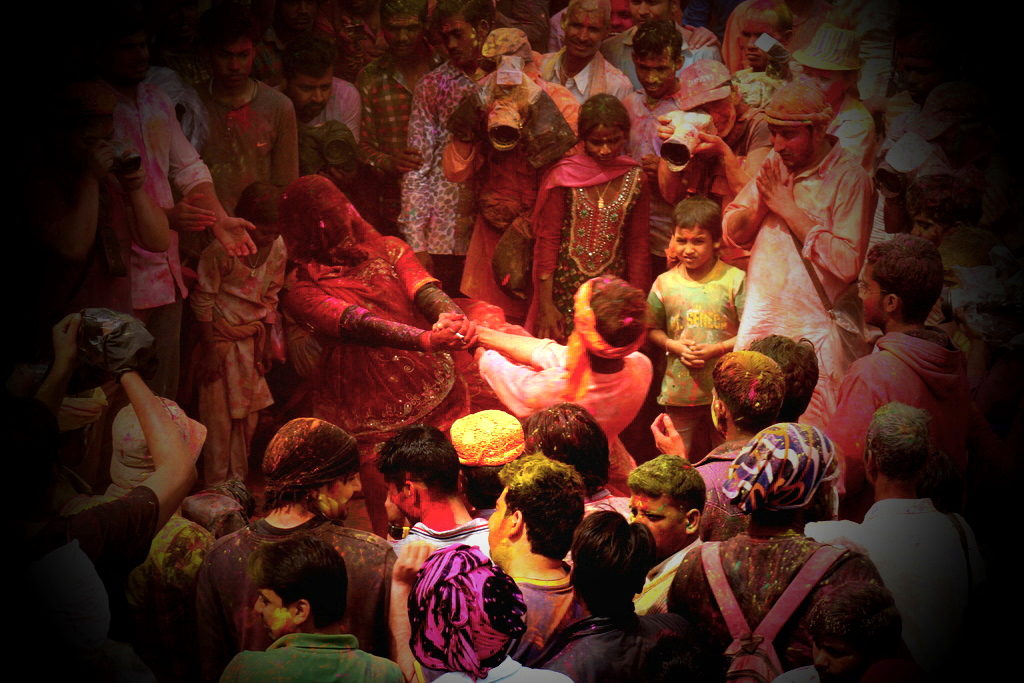I have a knack for stories , specially the ones which were heavily infused with mythology. As much as these stories entertain me , they also leave me with several revelations. And in that league of entertainers and revealers, Krishna is my hero(or heroine!) His Raas-leela is the father of all love-affairs, that can justly be summed as ‘It’s better to have love and lust, than never love at all!’
So powerful and aspirational was Raas-leela, that mythology endorses Shiva bathing in the Yamuna, to become a gopi (a milkmaid), so that he could dance the Raas-leela with Krishna. This is an idea that has inspired the temple of Gopeshwarji in Mathura.
In Mathura, Shiva is Gopeshwara. The mask on the Shiva-linga is decorated with female accessories, to participate in Krishna’s Raas-leela. Perhaps this is an affectionate acknowledgement of transgender realities. Perhaps this is why ‘sakhis‘ in Vrindavan take such a place of affection in all their celebrations, and holi is no exception.
Lali and Sunehri:
Lali stays with her brother, in Kadambakhandi, a little away from Vrindavan. The brother plays the mridangam as part of troupe performing raas leela for tour companies. Lali dances in the same troupe. And she dances as if possessed.
Their little hut is in the banks of the kund(sacred pond), where a kadamba (bur flower)tree and a tamala (a dark branched tree with fragrant yellow-white flowers)tree stand intertwined, believed to be Radha and Krishna in foreplay. It is this tree that Lali worships.
It is this tree, that she believes gives her strength. It is here that she sits and visualizes herself twirling the ghumar in front of her Lord. It is here that she had first met Sunehri, her soul-sakhi, companion and sound-board…and coaxed her brother to allow her to perform in the troupe. Sunehri had always been more playful, always able to cover her mossed mind with a smile in her face.
They were polar opposites. But these two women, born as men, were true examples of sakha-bhaav. No lust. no expectations. Pure as the Yamuna. Pure as the tamaal and the kadamba. Sunehri had a voice to invoke the Gods, and Lali needed her.
Last evening, Lali was sitting on the banks of Kesi ghat in Vrindavan. After being shunned by a male lover, she left the temple complex of Barsana and went back home, half-way along with Sunehri. Unable to bear more verbal abuse from her elder brother, she rode out of her home later in the evening, tears in her eyes.
The melting sun on the Yamuna and the chants of the priests doing the arati has always pacified her. She has always found refuge here, when the perfumed smoke from the urn shadowed and protected her.
The heady aroma of flowers, scented oil and sandal wood incense brought her strength. Sunehri sat quietly beside her. Tomorrow was Holi in Nandgaon. She would dance for her Krishna. She would dance for her Deva. She would always be his Radha. She would always be his sakhi. She would wear her red ghaghara. She would use her vermillion veil. She would wear her heavy silver ghungroos. She would draw strength from the colours. And she would dance like she was possessed.

Sambrita Basu is a food-fascinated travel writer and photographer based out of Bangalore India. A background and a degree in hospitality and restaurant management paved her interest in food. As the secretary of the institution’s editorial club, she contributed regularly and wrote about food in their annual magazine, A la Carte.
Sambrita has published interviews of celebrity authors and business veterans in international publications like Infineon. Her contributions also include photographs on foods and restaurants of Bangalore for DNA—a leading newspaper publication in Bangalore. Sambrita’s creative expressions transport readers to alleys, hotels, hide-outs, restaurants, attics, and spice markets in several cities across the world.
Sam (as she is popularly known by her friends and family) doesn’t write for a living, but she lives to write.

